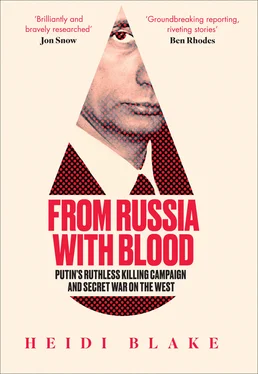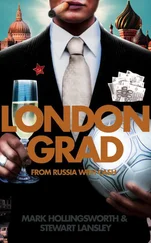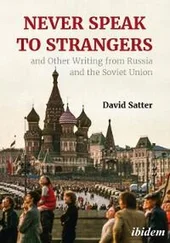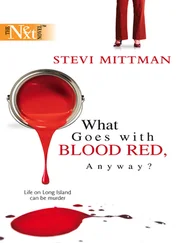1 ...8 9 10 12 13 14 ...17 Berezovsky had made a fortune out of hyperinflation at Logovaz, and now he planned to use it to buy up as many state assets as he could lay his hands on. The Soviet ban on private business had given rise to some forty-five thousand state-owned enterprises, including the country’s vast oil, gas, and mineral concerns, and they were all coming up for grabs at rock-bottom prices in Yeltsin’s fire sale. Berezovsky had the money and the Kremlin connections required to clean up in the auctions, but there was one more thing he needed to do. There was no way to prosper in the smash-and-grab chaos of post-Soviet Russia without getting into bed with the mob.
Gangsterism in Russia had exploded—left unchecked by the collapse of the Soviet security state, which had the multiplier effect of driving thousands of disbanded KGB officers into a life of organized crime. As the rest of the country emerged blinking from the suffocation of the Soviet system, its mafia groups were way ahead of the game. They boasted many of Russia’s brightest and best businessmen (the Soviets having allowed enterprising citizens no other path to prosperity), decades of commercial experience running the country’s de facto private sector—the black market—and deep political connections from years of supplying luxury goods to the Communist elite. So they swooped as soon as the auctions began, buying up swaths of Russia’s energy, mineral, telecom, and transport sectors. And capitalism opened up another major revenue stream: anyone who dared to do private business in Russia without paying the mob for krysha —protection, or, literally, “roof”—was intimidated, run out of town, or murdered. Not for nothing did Yeltsin call his country “the biggest mafia state in the world” in 1994, warning of “the superpower of crime that is devouring the state from top to bottom.” The mob had taken over—and if Berezovsky intended to survive in the hurly-burly new world of Russian business, he needed to find his way into the fold.
That was where Badri Patarkatsishvili came into the picture. The mustachioed Georgian businessman was a well-connected figure in the post-Soviet underworld, with powerful allies in the Moscow mafia and deep ties to criminal elements within the state security apparatus. He held a senior position with the state car maker in the Georgian capital until Berezovsky recognized the value of his criminal pedigree and poached him to become deputy director of Logovaz in Moscow. Patarkatsishvili’s most prized connection was with the Georgian mafia boss and champion wrestler Otari Kvantrishvili, among the most powerful organized crime kingpins operating out of Moscow in the 1990s. Kvantrishvili had become something of a figurehead for the mob in the early days of mass privatization, befriending key politicians and settling disputes between rival criminal factions vying for the most sought-after assets coming up for sale. Patarkatsishvili arrived in the capital at the end of 1993, just in time to get intimately connected in the Moscow underworld before Kvantrishvili was shot dead by a sniper while walking through a parking lot.
With Patarkatsishvili on board, Berezovsky had the unholy trinity of key connections required to get rich and stay alive in post-Soviet Russia: the mafia, the Kremlin, and the security service. He had also, it turned out, met his soul mate. Boris and Badri, as the soon-to-be inseparable pair were always known, made instant sense as a partnership. Berezovsky was a man of extreme tastes and tempers—irresistibly magnetic, fantastically persuasive, and hopelessly impractical. Patarkatsishvili was the polar opposite, with his twirling white mustache and fondness for fur hats. His avuncular outward appearance concealed a ruthless inner steel, and he always got the job done. It was like two halves of a whole had come together: Berezovsky brought the ideas; Patarkatsishvili put them into practice. An extraordinary business partnership had been born.
Boris and Badri went on to acquire an astonishing array of state assets at a fraction of their true value in Yeltsin’s privatization auctions, making them multibillionaires almost instantaneously. They began by parlaying Logovaz’s lucrative dealership contract with Avtovaz into a controlling stake in the state-owned car manufacturer before acquiring major interests in the national airline, Aeroflot, several big banks, and much of the country’s aluminum industry. The jewel in the crown came when they teamed up to help another budding oligarch, Roman Abramovich, buy the country’s largest oil company, Sibneft, for $100 million—a drop in the bucket of the billions it was really worth.
Having thus enriched themselves, Boris and Badri saw another opportunity to expand their power—by buying up the mass-media companies that were flourishing in the sudden absence of state censorship. Their media interests—including the national newspaper Kommersant and Russia’s leading television station, Channel One—gave them a portal into 98 percent of Russian households and proved an invaluable political bargaining chip.
By the mid-1990s, the old Soviet mathematician was the undisputed kingpin of a new kleptocracy emerging from the ashes of the Soviet state. But with that kind of power, inexorably, came great peril.
The early evening sun slanted under the overhanging eaves of the Logovaz Club, where Berezovsky’s silver Mercedes 600 limousine was purring in readiness for his departure. The oligarch strode briskly from the rear entrance and into the armored vehicle, giving a nod to the bodyguard holding the door open as he slid into the back seat. It was a mild summer evening in 1994, and the streets were still and quiet. But as the chauffeur cleared Berezovsky’s private drive and pulled onto the public road, the serenity was splintered by a massive explosion that blew the Mercedes skyward, ripping through the bulletproof door and pelting Berezovsky’s face with shards of metal and glass. When the smoke cleared, he saw the headless body in front: his chauffeur had been decapitated. Clambering out of the smoldering wreckage, Berezovsky found the street strewn with the bodies of half a dozen badly wounded pedestrians and the blackened remnants of a blue Opel that had been parked by the curb. The car had been packed with half a kilo of explosives, ready to detonate by remote control as soon as he drove by.
Berezovsky spent several weeks recovering from his burns and facial lacerations at a clinic in Switzerland—a home away from home, since this was where he stashed much of the cash he was siphoning off from the companies he’d bought from the state. When he returned to Moscow, he was called to a meeting with the young state security officer who had been put in charge of investigating the blast. His name was Alexander Litvinenko.
The meticulous young official had visited the site of the explosion, spoken to witnesses, and delved through countless intelligence files tracking the activities of Russia’s organized crime networks, but he had been unable to identify who had ordered the hit on Berezovsky. The only real lead was that Logovaz had recently become embroiled in a loan dispute with a bank controlled by a Moscow mobster named Sergei Timofeev—known across the city as Sylvester, thanks to a passing resemblance to Sylvester Stallone—though Berezovsky was tight-lipped on that subject. Litvinenko was coming up against a brick wall, but there was one thing he could be sure of: the attack on Berezovsky would be considered a shot across the bows of the oligarch’s protectors in the Moscow mafia. If they identified the culprit, retaliation was sure to follow.
Four months after the car bomb outside the Logovaz Club, police found another burned-out vehicle in central Moscow. The smart sedan had been decimated by a bomb attached to the underside of the chassis, and inside was a badly mangled body. It belonged to Sylvester.
Читать дальше












